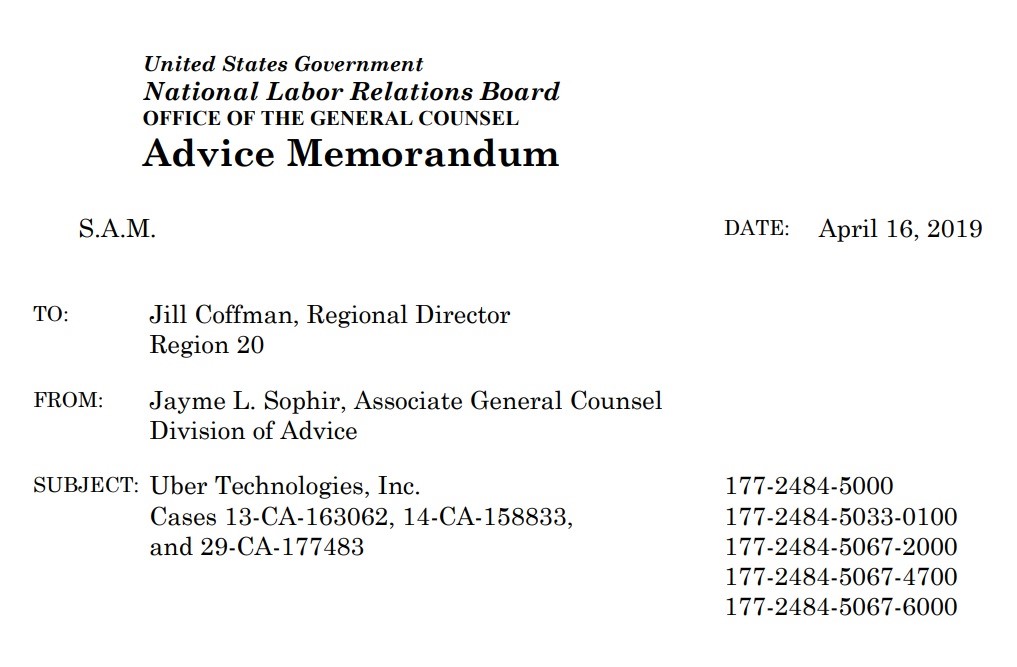Week in Regulation
May 20, 2019
Drilling into Costs
Last week saw a substantial set of cost reductions in the pages of the Federal Register. The most notable rule of the week came from the Department of Interior (DOI). That action, seeking to revise an Obama-era rulemaking on off-shore oil and gas drilling, is the most significant deregulatory final rule of 2019 thus far. Between both proposed and final rules last week, agencies published $1.7 billion in total net cost savings and added 376,682 hours of paperwork.
REGULATORY TOPLINES
- New Proposed Rules: 52
- New Final Rules: 55
- 2019 Total Pages: 22,647
- 2019 Final Rule Costs: $6.5 Billion
- 2019 Proposed Rule Costs: $5 Billion
TRACKING THE REGULATORY BUDGET
The DOI rule regarding “Blowout Preventer Systems and Well Control Revisions” contributed the bulk of last week’s savings under the fiscal year (FY) 2019 regulatory budget established by Executive Order (EO) 13,771. The rule “revises requirements for well design, well control, casing, cementing, real-time monitoring (RTM), and subsea containment,” in light of changes made under a 2016 rule. DOI estimates that this revision could yield roughly $1.5 billion in total (undiscounted) cost reductions. While the agency has been relatively quiet on the regulatory budget front, it now stands well-positioned to exceed its FY 2019 goal of $793.6 million in cost savings.
Another notable deregulatory measure from last week came from the Department of Labor (DOL). Its rule regarding “Standards Improvement Project” covers a variety of workplace standards reforms. DOL estimates that these changes could provided more than $6 million in annualized cost savings. This rule marks the fourth iteration of a regulatory review process that dates back to the Clinton Administration.
So far in FY 2019 (which began on October 1, 2018), there have been 48 deregulatory actions (per the rubric created by EO 13,771 and the administration’s subsequent guidance document) against 20 rules that increase costs and fall under the EO’s reach. Combined, these actions yield quantified net costs of roughly $7.4 billion. This total, however, includes the caveat regarding the baseline in the Department of Agriculture’s “National Bioengineered Food Disclosure Standard.” If one considers that rule to be deregulatory, the administration-wide net total is approximately $761 million in net costs. The administration’s cumulative savings goal for FY 2019 is approximately $18 billion.
THIS WEEK’S REGULATORY PICTURE
One can describe “regulatory policy” in many ways: mundane, opaque, monotonous, complex, legalistic. The list goes on. In order to help provide a clearer and more straight-forward view into this world, the American Action Forum (AAF) will seek to provide a brief illustration of a notable regulatory trend we have identified in a given week. This week’s entry: The National Labor Relations Board’s (NLRB) advice memorandum pertaining to ride-sharing service, Uber Technologies, and its regulatory significance.

The NLRB is not a traditional regulatory agency in that most of its consequential actions are not regulations, per se. Instead, most policy is established through precedent-setting decisions on cases brought before the board, and through advice memoranda like the one pictured above.
That image is taken from the NLRB’s latest advice memorandum, publicly released this week, that dismissed charges claiming that Uber’s drivers are employees and not independent contractors. Uber has insisted from the outset of its service that its drivers are independent contractors, while others, including many of its drivers, argue otherwise. (For insight into the ramifications of this memorandum on the gig economy, be sure to read AAF President Douglas Holtz-Eakin’s recent Daily Dish.)
The memorandum, issued by the NLRB’s Office of General Counsel, has the regulatory effect of providing clarity to companies that are structured similarly to Uber. Though the memorandum applies specifically to the facts of Uber’s situation, other gig economy companies can now expect similar treatment through the remainder of the Trump Administration. The catch of setting policy in this way, however, is that a new administration (and new NLRB general counsel) could issue a new memorandum contradicting and overriding the one issued this week.
TOTAL BURDENS
Since January 1, the federal government has published $11.4 billion in net costs (with $6.5 billion in finalized costs) and 25.5 million hours of net paperwork burden increases (with 24.9 million coming from final rules). Click here for the latest Reg Rodeo findings.












